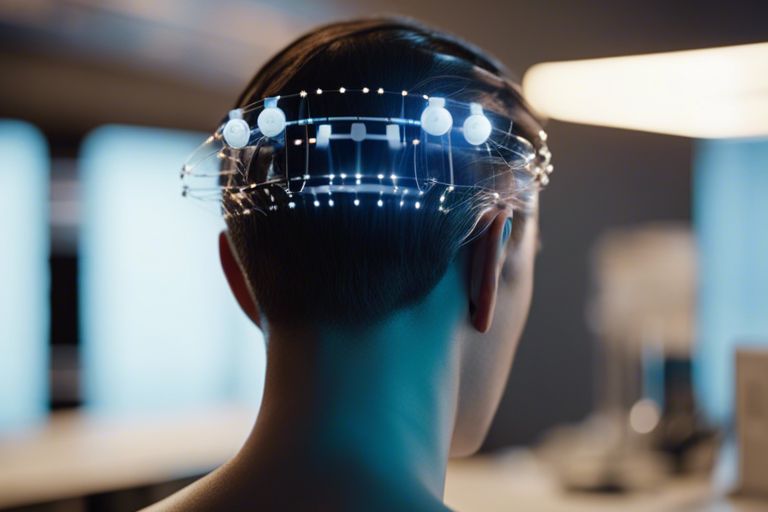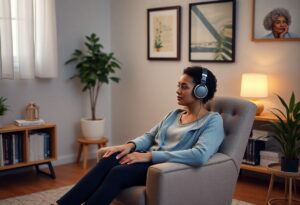There’s a fascinating realm of possibilities awaiting in the field of non-invasive brain stimulation, where breakthroughs are revolutionizing how we understand and interact with the most complex organ in your body. As technology advances, so too does our ability to modulate brain activity without invasive procedures. In this article, we will explore the latest innovations in non-invasive brain stimulation and how they are shaping the future of neuroscience and human cognition.
Key Takeaways:
- Growing Potential: Non-invasive brain stimulation techniques show a growing potential in various fields such as cognitive enhancement, pain management, and neuropsychiatric disorders.
- Advancements in Technology: Ongoing advancements in technology are leading to more precise and efficient non-invasive brain stimulation methods, allowing for targeted and personalized treatment approaches.
- Ethical Considerations: As the field progresses, there is a need for careful consideration of ethical implications surrounding the use of non-invasive brain stimulation, including issues related to privacy, consent, and potential risks.
Historical Background
Early beginnings of brain stimulation
To understand the advancements in non-invasive brain stimulation, you must investigate into its historical roots. The concept of brain stimulation dates back centuries, with early civilizations using techniques like trepanation to treat various ailments. In the 18th century, Luigi Galvani’s experiments with electricity and frogs laid the foundation for the understanding of the electrical nature of the brain.
Development of non-invasive techniques
Background On the path to non-invasive techniques, researchers explored different ways to influence brain activity without the need for surgery. The 20th century saw significant strides in this area, with the invention of techniques like transcranial magnetic stimulation (TMS) and transcranial direct current stimulation (tDCS). These methods revolutionized the field by offering safer and more accessible ways to modulate brain function.
A deeper comprehension of the brain’s complex network and the development of sophisticated technology have allowed for precise targeting of specific brain regions. This level of refinement has made non-invasive brain stimulation a promising tool in various fields, from treating neurological disorders to enhancing cognitive abilities.

Current Applications
Assuming you are eager to investigate into the current applications of non-invasive brain stimulation, you can explore a comprehensive overview of the topic in Non-Invasive Brain Stimulation – an overview. Within this fascinating field, non-invasive brain stimulation holds promise for various applications. Let’s take a closer look at some of the current uses.
Treatment of neurological disorders
disorders such as depression, epilepsy, and chronic pain are areas where non-invasive brain stimulation techniques have shown remarkable potential. By modulating neuronal activity in specific brain regions, these techniques offer a promising avenue for alleviating symptoms and improving the quality of life for individuals with these conditions.
Enhancement of cognitive functions
For those seeking to boost their cognitive abilities, non-invasive brain stimulation presents an exciting frontier. By targeting areas associated with memory, attention, and executive functions, these techniques have the potential to enhance your cognitive capabilities.
functions such as memory retention and learning speed can be significantly augmented through the targeted application of non-invasive brain stimulation techniques. Whether you are a student striving for academic excellence or a professional looking to sharpen your cognitive skills, the possibilities for cognitive enhancement are intriguing.
Potential for neuroplasticity
cognitive flexibility and learning capacity are closely tied to the concept of neuroplasticity, the brain’s ability to reorganize itself by forming new neural connections. Non-invasive brain stimulation has emerged as a tool that can harness this potential for neuroplasticity, offering new avenues for enhancing your brain’s adaptability and resilience.
Another exciting aspect of non-invasive brain stimulation is its ability to induce neural changes that promote recovery from neurological injuries or optimize brain function in healthy individuals. By tapping into the brain’s innate capacity for change, these techniques have the potential to revolutionize how we approach brain health and cognitive enhancement.
Emerging Technologies
Advances in transcranial magnetic stimulation (TMS)
An exciting development in non-invasive brain stimulation is the advancements in transcranial magnetic stimulation (TMS). This technology involves using magnetic fields to induce electrical currents in specific areas of the brain, allowing for targeted stimulation of neurons. Researchers are constantly refining TMS techniques to improve precision and effectiveness in treating various neurological and psychiatric conditions.
Development of transcranial direct current stimulation (tDCS)
Current research in non-invasive brain stimulation also focuses on the development of transcranial direct current stimulation (tDCS). This technique involves applying a low electrical current to modulate brain activity. By adjusting the direction and intensity of the current, researchers can influence neuronal excitability and potentially enhance cognitive functions. tDCS shows promise in various applications, from improving learning and memory to treating mood disorders.
The potential of tDCS lies in its ability to safely and painlessly modulate brain activity, making it a widely accessible tool for cognitive enhancement and therapeutic interventions. As researchers investigate deeper into understanding the mechanisms underlying tDCS effects, the future holds exciting possibilities for harnessing this technology to optimize brain function.
New frontiers in electroencephalography (EEG)
Any discussion of non-invasive brain stimulation technologies would be incomplete without mentioning the new frontiers in electroencephalography (EEG). This method involves recording the electrical activity of the brain through electrodes placed on the scalp. Advances in EEG technology are revolutionizing our ability to decode brain signals, providing insights into cognitive processes and offering new ways to interface with technology.
Stimulation techniques paired with EEG, such as closed-loop systems that adjust stimulation based on real-time brain activity, have the potential to enhance therapeutic outcomes and optimize cognitive performance. By leveraging the wealth of information captured through EEG, researchers are paving the way for a deeper understanding of the brain and paving the path towards personalized interventions.
Therapeutic Potential
Once again, non-invasive brain stimulation techniques present promising therapeutic potential in various fields of medicine. Let’s explore some of the key areas where these techniques are showing significant promise.
Management of chronic pain
Pain management is a crucial area where non-invasive brain stimulation techniques are being increasingly utilized. By targeting specific areas of the brain involved in pain processing, these techniques have shown effectiveness in reducing chronic pain symptoms. Transcranial magnetic stimulation (TMS) and transcranial direct current stimulation (tDCS) are the two primary methods being studied for chronic pain management.
Treatment of mental health disorders
Pain is not just physical; it can also manifest as mental health disorders. Non-invasive brain stimulation techniques offer a potential solution for treating conditions such as depression, anxiety, and post-traumatic stress disorder (PTSD). By modulating neural activity in regions associated with these disorders, these techniques show promise in alleviating symptoms and improving overall mental well-being.
Non-invasive brain stimulation techniques are particularly exciting in the treatment of depression. Studies have shown that repetitive transcranial magnetic stimulation (rTMS) can have antidepressant effects by stimulating neural circuits involved in mood regulation. This non-pharmacological approach offers a novel way to manage depression, especially in cases where traditional treatments have been ineffective.
Rehabilitation after brain injury
Brain injuries can have long-lasting effects on cognitive and motor functions. Non-invasive brain stimulation techniques, such as transcranial electrical stimulation (tES), are being investigated for their potential in aiding rehabilitation after brain injury. By modulating neural activity and promoting neuroplasticity, these techniques may help improve recovery outcomes in individuals recovering from strokes, traumatic brain injuries, and other neurologic conditions.
Understanding the intricate connections within the brain and how they can be modulated through non-invasive techniques opens up new possibilities for enhancing rehabilitation efforts after brain injury. These approaches hold great promise in improving both the quality of life and functional outcomes for individuals recovering from various brain injuries.
Ethical Considerations
Despite exciting advancements in non-invasive brain stimulation technologies, it is crucial to consider the ethical implications surrounding their use. As a researcher or practitioner in this field, you must uphold the highest ethical standards to ensure the well-being of your participants and the integrity of your research.
Informed consent and participant safety
Ethical considerations in non-invasive brain stimulation research prominently feature informed consent and participant safety. Before engaging in any studies or interventions involving brain stimulation, you must obtain explicit and informed consent from your participants. This includes explaining the potential risks and benefits of the procedure, ensuring that participants understand the nature of the stimulation, and allowing them to withdraw from the study at any time without consequence.
Potential risks and side effects
Consent is crucial when it comes to potential risks and side effects associated with non-invasive brain stimulation. For instance, while techniques like transcranial magnetic stimulation (TMS) and transcranial direct current stimulation (tDCS) are generally considered safe, there have been reports of mild side effects such as headaches, scalp discomfort, or temporary changes in cognition. It is vital to thoroughly educate your participants about these risks and monitor them closely throughout the study to ensure their safety.
Regulatory frameworks for non-invasive brain stimulation
Potential regulatory frameworks for non-invasive brain stimulation are also vital to consider. As the field continues to evolve, regulatory bodies may establish guidelines or restrictions to ensure the ethical and responsible use of these technologies. Familiarize yourself with the existing regulations in your region and stay updated on any developments to ensure that your work complies with the highest standards of ethics and safety in non-invasive brain stimulation research.
Future Directions
Personalized brain stimulation
After exploring the current landscape of non-invasive brain stimulation, the future holds great promise for personalized approaches. By developing techniques that can tailor stimulation parameters to individual brain characteristics, researchers aim to optimize treatment outcomes. Imagine a future where your brain activity is analyzed to determine the exact type and intensity of stimulation you need for a specific condition. This level of personalization could revolutionize the field, leading to more effective and targeted interventions.
Integration with artificial intelligence
On the horizon is the integration of non-invasive brain stimulation with artificial intelligence (AI) algorithms. AI can analyze vast amounts of data to identify patterns and predict optimal stimulation protocols. This collaboration could enhance the precision and efficiency of brain stimulation treatments. Imagine a scenario where AI algorithms continuously adapt the stimulation parameters in real-time based on your brain’s response. This dynamic approach could potentially lead to better therapeutic outcomes and faster recovery.
Any integration with artificial intelligence in the field of non-invasive brain stimulation would require robust algorithms and sophisticated neural interfaces. Researchers are exploring ways to harness the power of AI to decode complex brain signals and optimize stimulation strategies. By leveraging machine learning and neural network models, scientists aim to develop innovative solutions that can enhance the efficacy of brain stimulation techniques.
Expanding access to non-invasive brain stimulation
With advancements in technology and increasing research in the field, the future of non-invasive brain stimulation also involves expanding access to a broader population. Innovative strategies are being developed to make these techniques more affordable, portable, and user-friendly. Imagine a future where non-invasive brain stimulation devices are as common as smartphones, allowing individuals to easily access and utilize these tools for various cognitive enhancements or therapeutic purposes.
Brain stimulation technologies are evolving rapidly, and efforts are underway to make these interventions more accessible to diverse groups, including underserved communities and remote populations. By democratizing access to non-invasive brain stimulation, researchers aim to empower individuals to take control of their brain health and well-being. This inclusive approach could pave the way for a more equitable distribution of cognitive enhancement tools in the future.
Summing up
With these considerations in mind, the future of non-invasive brain stimulation holds great promise for advancing our understanding of the brain and developing innovative treatments for various neurological and psychiatric conditions. As technology continues to evolve, so too will our ability to harness the power of techniques like TMS and tDCS to unlock the mysteries of the human brain.
Q: What is non-invasive brain stimulation?
A: Non-invasive brain stimulation is a form of neuromodulation that uses techniques such as transcranial magnetic stimulation (TMS) or transcranial electrical stimulation (tES) to influence brain activity without the need for surgery or implantation of electrodes.
Q: What are the potential applications of non-invasive brain stimulation?
A: Non-invasive brain stimulation has potential applications in treating various neurological and psychiatric disorders such as depression, anxiety, chronic pain, and movement disorders. It is also being explored for enhancing cognitive abilities and improving motor functions.
Q: What are the challenges and limitations of non-invasive brain stimulation?
A: Some challenges and limitations of non-invasive brain stimulation include variability in individual responses to treatment, limited understanding of the underlying neural mechanisms, and the need for further research to optimize stimulation parameters and ensure long-term safety and efficacy.







